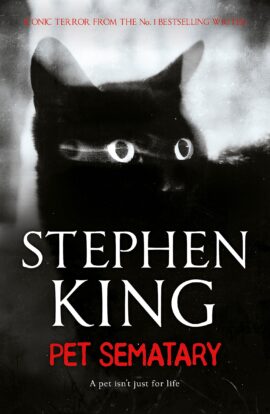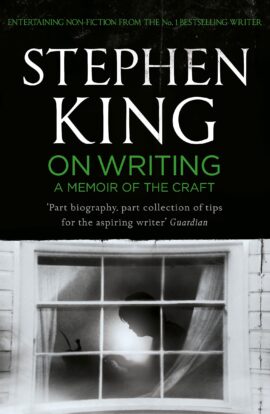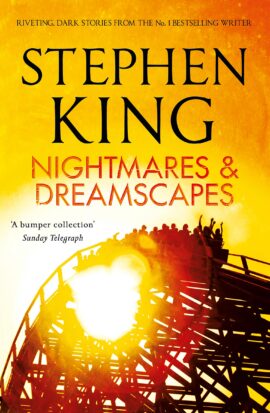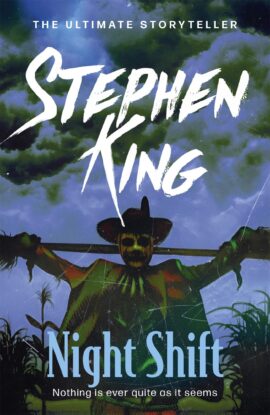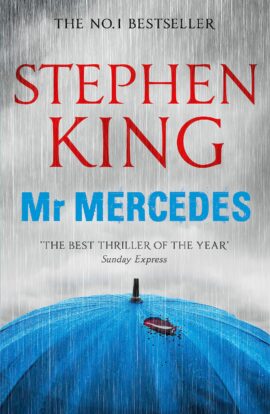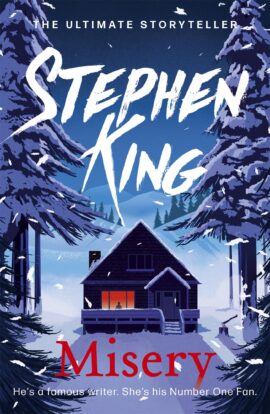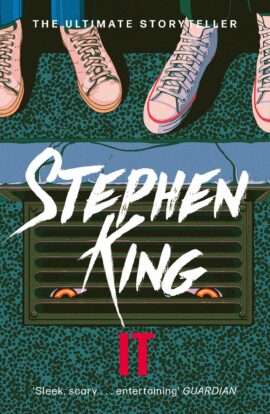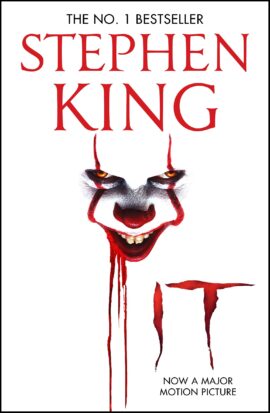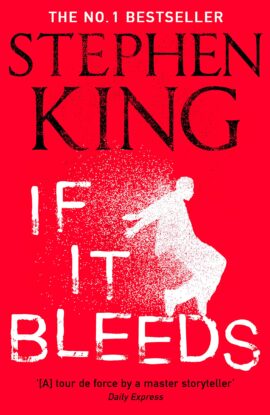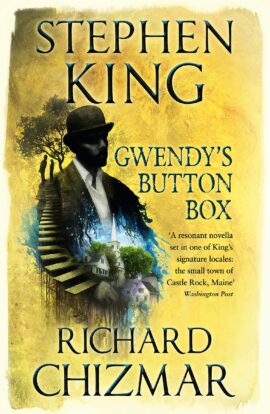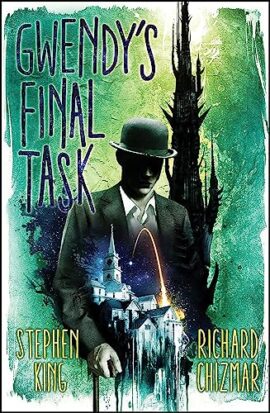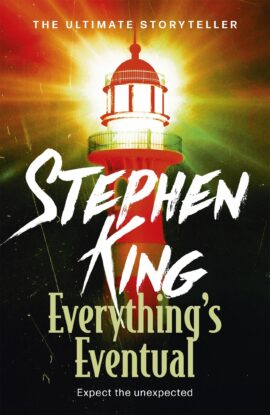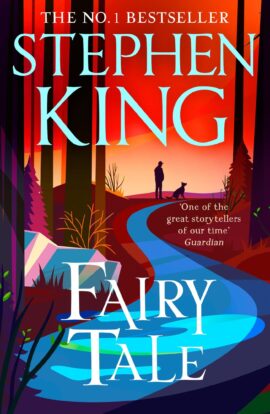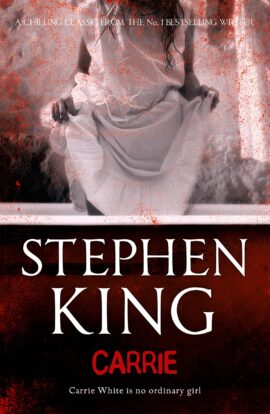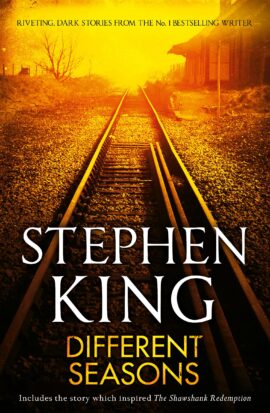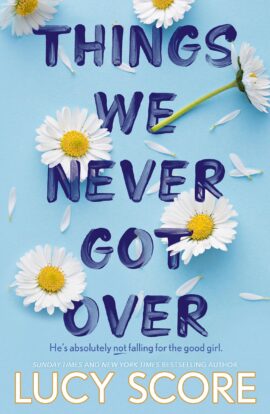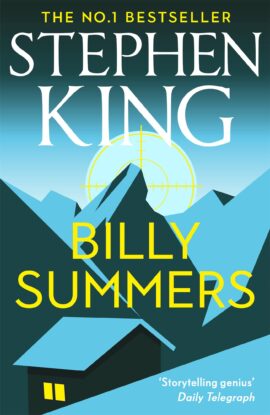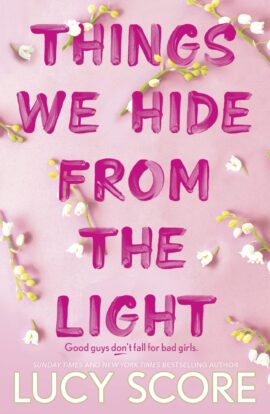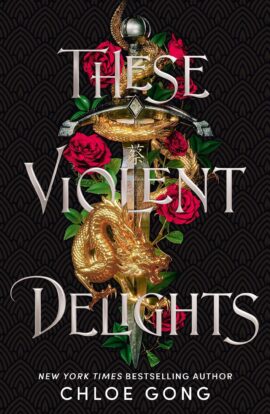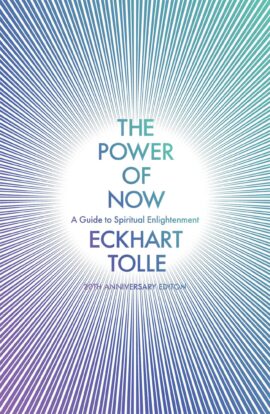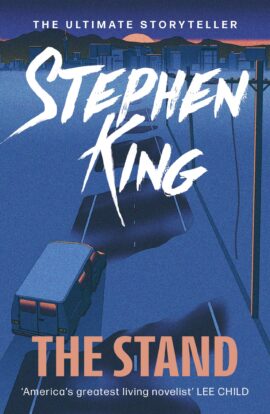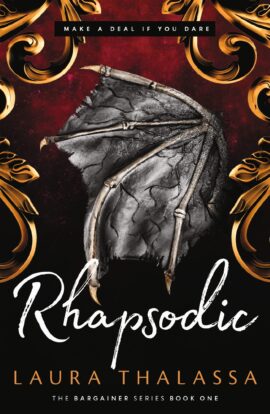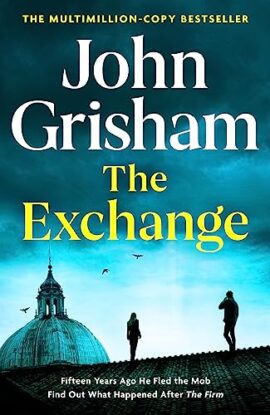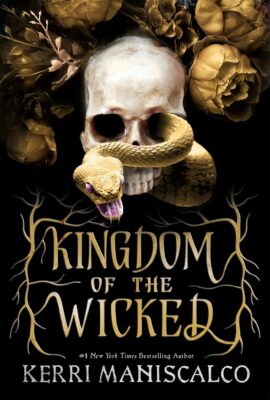Affichage de 6101–6125 sur 8986 résultatsTrié par popularité
ON WRITING (REISSUES)
Part memoir, part master class by one of the bestselling authors of all time, this superb volume is a revealing and practical view of the writer's craft, comprising the basic tools of the trade every writer must have. King's advice is grounded in the vivid memories from childhood through his emergence as a writer, from his struggling early career to his widely reported, near-fatal accident in 1999 - and how the inextricable link between writing and living spurred his recovery.There is a reason why Stephen King is one of the bestselling writers in the world, ever. Described in the Guardian as 'the most remarkable storyteller in modern American literature', Stephen King writes books that draw you in and are impossible to put down.~hodder.co.uk
Nightmares and Dreamscapes
A solitary finger pokes out of a drain. Novelty teeth turn predatory. The Nevada desert swallows a Cadillac. Meanwhile, the legend of Castle Rock returns... and grows on you. What does it all mean? What else could it mean? Stephen King is back with a powerful new collection of stories - a vast, many-chambered cave of a volume.In story after story, the long reach of Stephen King's imagination and the no-holds-barred force of his storytelling will take you to places you've never been before. On a roller-coaster through the macabre and the monstrous, via cutting-edge explorations of good and evil - and onto a heartfelt piece on Little League baseball.You will lose a good deal of sleep. But Stephen King, writing to beat the devil, will do your dreaming for you...
Mr Mercedes
Who is going to be the fish in this relationship, and who is going to be the fisherman?BILL HODGESretired cop, tormented by ‘the Mercedes massacre’, a case he never solved.BRADY HARTSFIELDperpetrator of that notorious crime, and preparing to kill again.Now each is closing in on the other in a mega-stakes race against time from worldwide bestselling master of suspense, Stephen King.
Misery
Misery Chastain was dead Paul Sheldon had just killed her with relief with joy Misery had made him rich she was the heroine of a string of bestsellers And now he wanted to get on to some real writing Thats when the car accident happened and he woke up in pain in a strange bed But it wasnt the hospital Annie Wilkes had pulled him from the wreck brought him to her remote mountain home splinted and set his mangled legs The good news was that Annie was a nurse and has painkilling drugs The bad news was that she was Pauls Number One Fan And when she found out what Paul had done to Misery she didnt like it She didnt like it at all And now he had to bring Misery back to life Or else
It
It is the children who see - and feel - what made the small town of Derry so horribly different. In the storm drains, in the sewers, IT lurks, taking on the shape of every nightmare, each one's deepest dread. Sometimes IT reaches up, seizing, tearing, killing...Time passes and the children grow up, move away and forget. Until they are called back, once more to confront IT as it sirs and coils in the sullen depths of their memories, reaching up again to make their past nightmares a terrible present reality.
If It Bleeds: The No. 1 bestseller featuring a stand-alone sequel to THE OUTSIDER, plus three irresistible novellas
The eagerly awaited paperback edition of the No. 1 bestselling hardcover featuring a stand-alone sequel to The Outsider, and three additional irresistible novellas.News people have a saying: 'If it bleeds, it leads'. And a bomb at Albert Macready Middle School is guaranteed to lead any bulletin.Holly Gibney of the Finders Keepers detective agency is working on the case of a missing dog - and on her own need to be more assertive - when she sees the footage on TV. But when she tunes in again, to the late-night report, she realises something is not quite right about the correspondent who was first on the scene. So begins 'If It Bleeds', a stand-alone sequel to the No. 1 bestselling THE OUTSIDER featuring the incomparable Holly on her first solo case - and also the riveting title story in Stephen King's brilliant new collection.Dancing alongside are three more wonderful long stories from this 'formidably versatile author' (The Sunday Times) - 'Mr Harrigan's Phone', 'The Life of Chuck' and 'Rat'. All four display the richness of King's storytelling with grace, humour, horror and breathtaking suspense. A fascinating Author's Note gives us a wonderful insight into the origin of each story and the writer's unparalleled imagination
Book 9781399702386
King And Chizmar Join Forces Again With A Powerful Stand-alone Novel That Is Also The Final Chapter In The Gwendy Trilogy. When Gwendy Peterson Was Twelve, A Stranger Named Richard Farris Gave Her A Mysterious Box For Safekeeping. It Offered Treats And Vintage Coins, But It Was Dangerous. Pushing Any Of Its Seven Coloured Buttons Promised Death And Destruction. Years Later, The Button Box Re-entered Gwendy's Life. A Successful Novelist And A Rising Political Star, She Was Once More Forced To Deal With The Temptations That The Box Represented - An Amazing Sense Of Wellbeing, Balanced By A Terrifyingly Dark Urge Towards Disaster. With The Passing Of Time, The Box Has Grown Ever Stronger And Evil Forces Are Striving To Possess It. Once Again, It Is Up To Gwendy Peterson, Now A United States Senator Battling The Early Symptoms Of Alzheimer's Disease, To Keep It From Them. At All Costs. But Where Can You Hide Something From Such Powerful Entities? Gwendy's Final Task Is A Wildly Suspenseful And At The Same Time Deeply Moving Novel In Which 'horror Giants' (publishers Weekly) Stephen King And Richard Chizmar Take Us On A Journey From Castle Rock To Another Famous Cursed Maine City To The Mf-1 Space Station, Where Gwendy Must Execute A Secret Mission To Save The World. And, Maybe, All Worlds.
Everything’s Eventual
A spine-tingling collection of stories from the No. 1 bestselling master of horror - now with a stunning new cover look.Nothing is quite as it seems.Expect the unexpected in this veritable treasure trove of enthralling, witty, dark tales that could only come from the imagination of the greatest storyteller of our time.In this eerie, enchanting compilation, Stephen King takes readers down a road less travelled (for good reason) in the blockbuster e-book 'Riding the Bullet'. Terror becomes deja vu all over again when you get 'That Feeling, You Can Only Say What It Is in French'. 'LT's Theory of Pets' will make you stop and think before giving a dog to a loved one. And there are eleven more stories that will keep you awake until dawn.Stories:-Autopsy Room Four-The Man in the Black Suit-All That You Love Will Be Carried Away-The Death of Jack Hamilton-In the Deathroom-The Little Sisters of Eluria-Everything's Eventual-L. T.'s Theory of Pets-The Road Virus Heads North-Lunch at the Gotham Café-That Feeling, You Can Only Say What It Is in French-1408-Riding the Bullet-Luckey Quarter
Fairy Tale: Stephen King
Legendary Storyteller Stephen King Goes Into The Deepest Well Of His Imagination In This Spellbinding Novel About A Seventeen-year-old Boy Who Inherits The Keys To A Parallel World Where Good And Evil Are At War, And The Stakes Could Not Be Higher - For Their World Or Ours. Charlie Reade Looks Like A Regular High School Kid, Great At Baseball And Football, A Decent Student. But He Carries A Heavy Load. His Mom Was Killed In A Hit-and-run Accident When He Was Ten, And Grief Drove His Dad To Drink. Charlie Learned How To Take Care Of Himself - And His Dad. Then, When Charlie Is Seventeen, He Meets A Dog Named Radar And Her Aging Master, Howard Bowditch, A Recluse In A Big House At The Top Of A Big Hill, With A Locked Shed In The Backyard. Sometimes Strange Sounds Emerge From It. Charlie Starts Doing Jobs For Mr. Bowditch And Loses His Heart To Radar. Then, When Bowditch Dies, He Leaves Charlie A Cassette Tape Telling A Story No One Would Believe. What Bowditch Knows, And Has Kept Secret All His Long Life, Is That Inside The Shed Is A Portal To Another World. King's Storytelling In Fairy Tale Soars. This Is A Magnificent And Terrifying Tale About Another World Than Ours, In Which Good Is Pitted Against Overwhelming Evil, And A Heroic Boy - And His Dog - Must Lead The Battle.
Doctor Sleep
Haunted by the inhabitants of the Overlook Hotel where he spent one horrific childhood year Dan has been drifting for decades desperate to shed his fathers legacy of despair alcoholism and violence Finally he settles in a New Hampshire town an AA community that sustains him and a job at a nursing home where his remnant shining power provides the crucial final comfort to the dying Aided by a prescient cat he becomes Doctor Sleep Then Dan meets the evanescent Abra Stone and it is her spectacular gift the brightest shining ever seen that reignites Dans own demons and summons him to a battle for Abras soul and survival S
Things We Never Got Over: the must-read romantic comedy and TikTok bestseller!: 1 (Knockemout Series)
Bearded, bad-boy barber Knox prefers to live his life the way he takes his coffee: Alone. Unless you count his basset hound, Waylon. Knox doesn’t tolerate drama, even when it comes in the form of a stranded runaway bride.Naomi wasn’t just running away from her wedding. She was riding to the rescue of her estranged twin to Knockemout, Virginia, a rough-around-the-edges town where disputes are settled the old-fashioned way…with fists and beer. Usually in that order.Too bad for Naomi her evil twin hasn’t changed at all. After helping herself to Naomi’s car and cash, Tina leaves her with something unexpected. The niece Naomi didn’t know she had. Now she’s stuck in town with no car, no job, no plan, and no home with an 11-year-old going on thirty to take care of.There’s a reason Knox doesn’t do complications or high-maintenance women, especially not the romantic ones. But since Naomi’s life imploded right in front of him, the least he can do is help her out of her jam. And just as soon as she stops getting into new trouble he can leave her alone and get back to his peaceful, solitary life.At least, that’s the plan until the trouble turns to real danger.
Billy Summers: The No. 1 Sunday Times Bestseller
Billy Summers is a man in a room with a gun. He’s a killer for hire and the best in the business. But he’ll do the job only if the target is a truly bad guy. And now Billy wants out. But first there is one last hit. Billy is among the best snipers in the world, a decorated Iraq war vet, a Houdini when it comes to vanishing after the job is done. So what could possibly go wrong?How about everything...
Things We Hide From The Light
Police Chief Nash Morgan is known for two things: being a good guy and the way his uniform accentuates his rear end . . .But two bullets put a dent in his Southern charm and now he’s facing a criminal still on the loose and a town full of citizens that consider the law more of a ‘guideline’. The last thing he needs is the leggy, smart-mouthed Lina Solavita moving in next door, making him feel things he doesn’t have the energy to feel.Lina is on a mission. As soon as she gets what she’s after, she has no intention of sticking around. The town of Knockemout has other ideas. Soon she finds herself sucked into small-town life. Dog-sitting. Saying yes to a bridesmaid’s dress. Listening to the sexy chief of police in the shower.But when Nash discovers Lina’s secret these friends become furious enemies – though the sparks flying between them don’t know the difference between love and hate.
These Violent Delights
A deliciously dark twist on Romeo and Juliet' Natasha Ngan, New York Times bestselling author of Girls of Paper and FireIn glittering Shanghai, a monster awakens . . .The year is 1926, and Shanghai hums to the tune of debauchery. A blood feud between two gangs runs the streets red, leaving the city in chaos.Juliette Cai is the proud heir of the Scarlet Gang - a network of criminals far above the law.Roma Montagov is the prodigal son of her greatest rivals, the White Flowers, who have fought the Scarlets for generations. He is also Juliette's first love . . . and first betrayal.When a deadly madness strikes gangsters on both sides, the people start to whisper. Of a contagion, and a monster in the shadows. And as the deaths stack up, Juliette and Roma must set their guns - and grudges - aside and work together.For if they can't stop this mayhem, there will be no city left to rule.Filled with romance, intrigue and betrayal, this heart-stopping fantasty retelling of Romeo and Juliet is perfect for fans of The Last Magician and Descendant of the Crane.Praise for Chloe Gong'Heady, smart, and vicious' Tessa Gratton, author of The Queens of Innis Lear'Deliciously dark' Natasha Ngan, New York Times bestselling author of Girls of Paper and Fire'Dark and beautiful' Emiko Jean, author of Empress of all Seasons'A terrific, deliciously unputdownable read' June Hur, author of The Silence of Bones
The Power of Now: (20th Anniversary Edition)
It's no wonder that The Power of Now has sold over 2 million copies worldwide and has been translated into over 30 foreign languages. Much more than simple principles and platitudes, the book takes readers on an inspiring spiritual journey to find their true and deepest self and reach the ultimate in personal growth and spirituality: the discovery of truth and light. In the first chapter, Tolle introduces readers to enlightenment and its natural enemy, the mind. He awakens readers to their role as a creator of pain and shows them how to have a pain-free identity by living fully in the present. The journey is thrilling, and along the way, the author shows how to connect to the indestructible essence of our Being, ''the eternal, ever-present One Life beyond the myriad forms of life that are subject to birth and death.'' Featuring a new preface by the author, this paperback shows that only after regaining awareness of Being, liberated from Mind and intensely in the Now, is there Enlightenment.
The Stand
First came the days of the plague. Then came the dreams.Dark dreams that warned of the coming of the dark man. The apostate of death, his worn-down boot heels tramping the night roads. The warlord of the charnel house and Prince of Evil.His time is at hand. His empire grows in the west and the Apocalypse looms.
Rhapsodic
Callypso Lillis is a siren with a very big problem, one that stretches up her arm and far into her past. For the last seven years she's been collecting a bracelet of black beads up her wrist, magical IOUs for favors she's received. Only death or repayment will fulfill the obligations. Only then will the beads disappear.Everyone knows that if you need a favor, you go to the Bargainer to make it happen. He's a man who can get you anything you want ... at a price. And everyone knows that sooner or later he always collects.But for one of his clients, he's never asked for repayment. Not until now. When Callie finds the fae king of the night in her room, a grin on his lips and a twinkle in his eye, she knows things are about to change. At first it's just a chaste kiss-a single bead's worth-and a promise for more.For the Bargainer, it's more than just a matter of rekindling an old romance. Something is happening in the Otherworld. Fae warriors are going missing one by one. Only the women are returned, each in a glass casket, a child clutched to their breast. And then there are the whispers among the slaves, whispers of an evil that's been awoken.If the Bargainer has any hope to save his people, he'll need the help of the siren he spurned long ago. Only, his foe has a taste for exotic creatures, and Callie just happens to be one.
Kingdom of the Wicked: TikTok made me buy it! The addictive and darkly romantic fantasy
Two sisters. One brutal murder. A quest for vengeance that will unleash Hell itself . . .A new series from the #1 New York Times bestselling author of Stalking Jack the Ripper.Emilia and her twin sister Vittoria are streghe - witches who live secretly among humans, avoiding notice and persecution. One night, Vittoria misses dinner service at the family's renowned Sicilian restaurant. Emilia soon finds the body of her beloved twin . . . desecrated beyond belief. Devastated, Emilia sets out to find her sister's killer and to seek vengeance at any cost-even if it means using dark magic that's been long forbidden.Then Emilia meets Wrath, one of the Wicked-princes of Hell she has been warned against in tales since she was a child. Wrath claims to be on Emilia's side, tasked by his master with solving the series of women's murders on the island. But when it comes to the Wicked, nothing is as it seems . . .





























